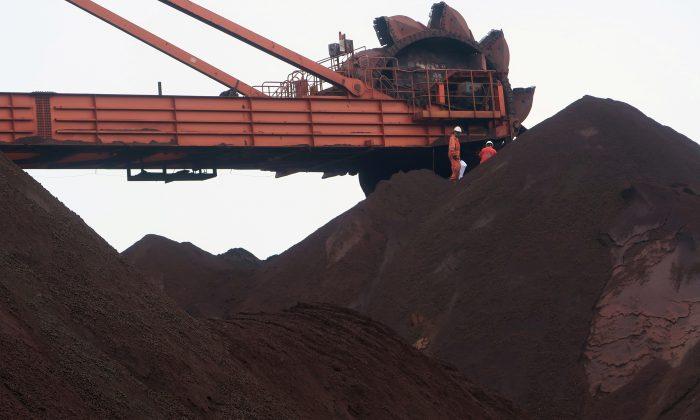BEIJING—Vale SA’s deadly mine disaster in Brazil has created uncertainty for China’s iron ore market at a time when demand for supply from the South American country is rising, multiple Chinese ore traders said on Jan. 28.
A dam holding mine waste at Vale’s Corrego do Feijao mine collapsed on Friday, burying mining facilities and nearby homes in the town of Brumadinho, killing dozens and leaving the community in shock as hundreds remain missing.
The Corrego mine accounts for 1.5 percent of output for Vale, the world’s largest iron ore miner, said Helen Lau, analyst at Argonaut Securities. However, four Chinese iron ore traders said they were concerned that supplies of high-grade Brazilian ore could tighten if the government orders other Vale mines shut to probe for additional safety issues.
“We’re worried that the mine accident might lead to higher premiums on low-aluminium iron ore,” said an iron ore trader with Zheshang Development Group. He declined to be identified due to company policy.
Vale is the world’s top supplier of low-aluminium iron ore, preferred by Chinese mills for its low impurity level.
Graphic:
The Samarco site remains closed after the 2015 incident, though Vale Chief Executive Officer Fabio Schvartsman said on Friday the site could resume one-third of its output in 2020.
Vale did carry out safety tests at its other mines in Brazil after the Samarco disaster and its main export port in the region, Tubarao, was closed for four days in 2016 to fix environmental issues.
“(Samarco) led to a long halt in operations and we don’t know if this one will cause even longer and broader disruption for mining activities at Vale,” said an iron-ore trader based in Qingdao.
He declined to be identified as he is not authorized to speak to media.
China’s demand for higher grade ore is returning as profit margins at steel mills have risen in recent weeks because of increasing steel demand.
Graphic:
If margins remain high, mills will increase high grade iron ore consumption to boost output, said the Qingdao trader.
The most-active iron ore futures on China’s Dalian Commodity Exchange soared nearly 6 percent on Monday trade to 567.5 yuan ($84.31) a tonne, their highest in 16 months.
($1 = 6.7313 Chinese yuan renminbi)






Friends Read Free